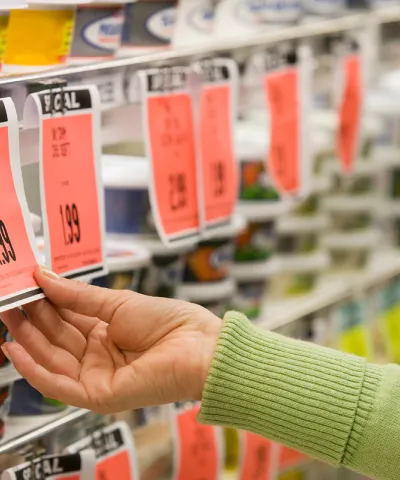The Good, Better, Best (GBB) packaging model has been a staple in technology, media, and telecommunications industries, offering tiered options to cater to different customer segments. This article explores the journey of GBB packaging, its impact, and lessons learned.
At its core, the GBB model taps into behavioral economics and psychological pricing, specifically the concepts of choice architecture, price anchoring, and the decoy effect. If you present three choices, people tend to avoid the extremes (too cheap or higher priced) and gravitate toward the middle.
Some of the earliest consumer-facing examples come from physical product packaging. Think about razor blades, fast food combos, or even insurance coverage levels. But it was software and telco plans in the late '90s and early 2000s that really professionalized and scaled the GBB playbook.
The rise in TMT: A perfect storm for GBB
TMT companies, especially telcos and media platforms, are rife with complex cost structures and service variations (data caps, streaming quality, bandwidth, add-ons). GBB provided a tidy framework to manage this complexity while guiding consumer decisions and improving customer experience.
It also aligned with how tech evolves: new features (like 5G, ultra-HD, cloud integrations) could be layered into the “Better” or “Best” offerings, keeping ARPU (average revenue per user) on the rise without disrupting the entire pricing structure. So, in a way, GBB was a logical, even inevitable, outcome once marketing, economics, and tech complexity all collided.
Benefits of GBB packaging design
- Simplicity and scalability: It’s easy to explain and easy to scale across markets or product lines. Sales teams love it because it gives them talking points and a ladder to upsell.
- Customer segmentation: Instead of needing a CRM loaded with behavioral data, GBB lets companies serve different needs with predefined packages. A small business selects the “Good” package, a growing one goes “Better,” and the enterprise takes “Best.”
- Revenue optimization: That “middle” tier is often engineered for profitability. The low tier hooks people in (acquisition), the middle is the margin sweet spot, and the high-end is aspirational. Even if few buy it, it makes the mid-tier look like a deal.
- Anchoring and framing effects: By showing a high-priced “Best” option, the mid-tier looks more reasonable. People anchor their perception of value to that top option.
- Natural upsell path:As customers grow or their needs change, the tiered structure provides a clear, frictionless upgrade path. This progression feels natural and intuitive, reducing decision fatigue and encouraging long-term customer retention.
The fall of GBB pricing and packaging strategy
As the market matured, GBB packaging faced challenges.
Complex customer needs: End of “one size fits most”
Early on, customers were easier to group: small, medium, large businesses. Or: casual, power, premium users. But now? Everyone’s a power user in some way. A creative professional might only need one feature from a premium plan. A small company might have enterprise-level security needs.
This complexity has outpaced what static GBB tiers can deliver. It’s like trying to squeeze everyone into three boxes when you really need a sliding scale or modular approach. GBB still serves as a baseline, but it risks alienating users who feel pigeonholed or underserved.
Customization and flexibility: The modular era
In a world where people can personalize everything from their music playlists to their phone home screens, rigid packages feel outdated. “Why am I paying for features I don’t use?” We’ve seen this especially in SaaS and streaming: more à la carte pricing, more dynamic bundles, even usage-based pricing models emerging.
And it's not just a consumer thing. Enterprise clients are demanding co-created solutions, such as a bundle that solves their pain points, maps to their org chart, their cloud stack, their CX goals. GBB just doesn’t have that kind of nuance.
Competitive pressure: Differentiation is hard when everyone looks the same
When all your competitors are using the same three-tier model, it becomes harder to stand out. Tiers become commoditized. Everyone has a "Pro" plan. Everyone has a "Plus." The result? Companies start adding meaningless features to bump up the price. Or worse, they engage in a race to the bottom by offering more in their "Good" tier just to stay competitive.
Some players are responding by:
- Using AI and usage data to create real-time adaptive pricing.
- Letting customers build their own bundles according to their needs and willingness to pay (e.g. “choose 3 out of 7 features”).
- Moving toward outcome-based pricing. Here you pay based on the value delivered, not a static plan.
Lessons learned and the way forward
1. Understand your ICP: Packaging starts with precision
GBB without a nuanced understanding of your Ideal Customer Profile (ICP) is just guesswork with price tags. But today, TMT companies can’t afford generic. With so many niche segments, a deep ICP understanding helps shape not just what you sell, but how you package and position it.
ICP-driven strategies mean:
- Your "Good" tier for one segment might be your "Better" tier for another.
- You can introduce vertical-specific bundles (e.g. media & telco bundles for hybrid work).
- You avoid feature-bloat by only including what your ICP truly values.
2. Embrace flexibility: GBB as a foundation, not a constraint
This is probably where the most energy is right now. The trick isn’t to kill GBB. It’s to unfreeze it. Keep the clarity of tiers, but layer in flexibility.
A little modularity goes a long way without overwhelming the buyer. This could look like:
- Base + Add-Ons models: where GBB tiers offer core functionality, but users can pick add-ons for analytics, integrations, storage, etc.
- Tier personas: building GBB tiers around jobs to be done instead of just usage volume or price point.
- Allowing mix-and-match within tiers: a user might be on the “Better” plan but swap out unused features for ones they value more.
3. Leverage data: Iterate intelligently, not just intuitively
This is the real unlock. GBB’s original appeal was its simplicity. Today, simplicity can come from data, if you know which features drive retention, what usage patterns predict churn, or where customers are hitting friction.
Smart companies are:
- Using feature telemetry to see which elements are underused or overused.
- Mapping customer feedback to packaging tiers to flag misalignment.
- Running pricing experiments in specific markets or cohorts.
- Using AI to simulate optimal pricing/package mixes before rolling them out.
And on the backend, you can even use this data to feed real-time recommendations (Based on your usage, you might benefit from adding XYZ…), creating an intelligent GBB+ model that feels both personalized and manageable.
How Simon-Kucher can help
As customer expectations shift toward greater personalization, transparency, and value, the traditional Good-Better-Best (GBB) model is no longer sufficient on its own. At Simon-Kucher, we help you move beyond static packaging to build flexible, data-driven monetization strategies that reflect how your customers buy, use, and grow.
Whether you’re a telecom player navigating complex network investments, a media platform rethinking your subscriber tiers, or a tech disruptor expanding into new markets, we partner with you to design pricing and packaging models that drive real commercial impact, without adding operational complexity.
We don’t just help you price better, we help you grow smarter. With decades of experience in the TMT sector and a global track record of success, we are your partner in transforming monetization from a back-office function into a front-line growth engine. If you’re ready to take your GBB model to the next level, reach out to our industry specialists.


